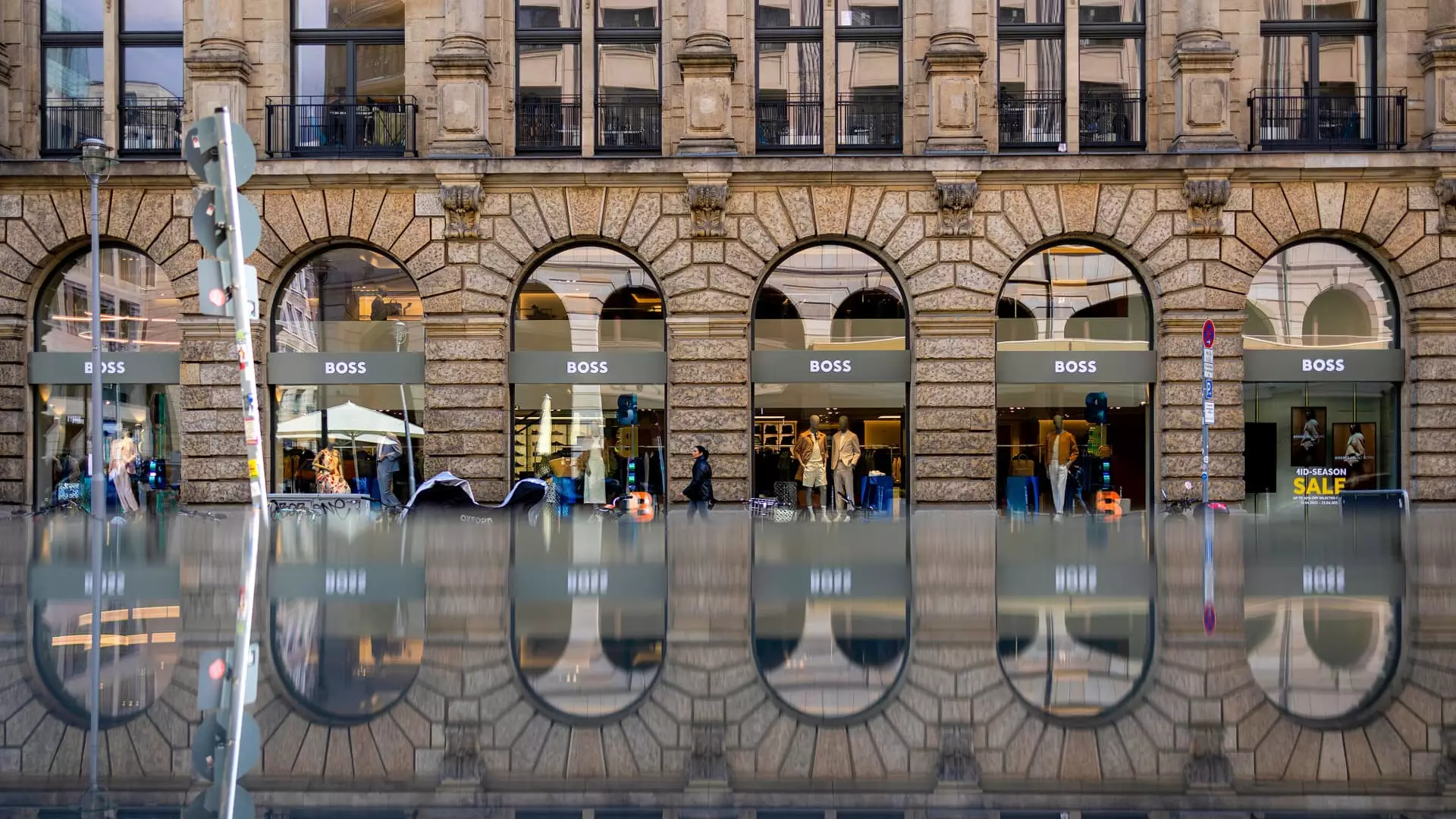In the ever-evolving landscape of retail, the recent performance of Hugo Boss serves as a reflection of both resilience and the pressing issues facing high-end brands today. The company’s announcement of a mere 2% decrease in first-quarter sales, while still concerning, was met with positive market reactions. Investors observed a significant increase in stock value—up to 8.8%—not merely as a stroke of luck but as a testament to a more robust strategy than one might expect during turbulent times for the industry. As the global economy continues to experience sapping uncertainties, particularly around tariffs and consumer demand, how companies adapt to these challenges deserves keen analysis.
Overcoming External Factors with Strategic Adaptation
Hugo Boss’s CEO, Daniel Grieder, highlighted external economic pressures from trade tensions and evolving consumer sentiment, particularly in the Asia-Pacific region. This scrutiny unveiled a complex relationship between global trade policies and consumer behavior, especially in key markets like China, which have seen subdued demand. However, one major takeaway from Hugo Boss’s latest earnings call is their proactive stance in adapting to these formidable challenges. The company’s commitment to watch economic developments closely, while not shying away from potential price adjustments and shifting sourcing strategies, indicates an agility that sets them apart in an industry often criticized for its stiff resistance to change.
As consumers in the U.S. demonstrate diminished confidence—partly due to a confluence of recession fears and immigration policies—Hugo Boss demonstrates remarkable awareness by strategizing on product sourcing. By redirecting products from China to more reliable markets, they are not only protecting their interests but signaling to investors that they won’t passively weather the storm; they intend to actively navigate through it.
Balancing Cost and Value: The Price Hike Predicament
Amid these developments, a significant challenge arises as many consumer goods companies begin to consider the impact of rising tariffs on their pricing structures. For Hugo Boss, which earns a substantial portion of its revenue from the U.S. market, the decision to raise prices could have detrimental effects on consumer behavior. Price sensitivity is increasingly prevalent, especially as consumers face their financial strains exacerbated by rising inflation.
Appraising the sensibilities of consumers while also protecting margins is a tightrope walk that Hugo Boss must master. Analysts from Citi have pointed out that any major alterations in the political or economic landscape that hinders consumer confidence present a real risk to Hugo Boss’s revenue goals. This balance of cost and value becomes ever more critical as brands strive to reassure customers of their worth against the backdrop of an uncertain economy.
The Need for Reinvigorating Women’s Wear
While diversifying product offerings has certainly benefitted Hugo Boss, there remains significant room for growth, particularly in women’s wear—a sector with a notable absence of innovation in the company’s lineup. Even with strides made in appealing to younger consumers and revamping store formats, the lack of a standout strategy in this essential category feels like an oversight.
Industry analysts point out that acquiring an established female-focused fashion brand could catalyze Hugo Boss’s growth trajectory, providing fresh designs that resonate with a broader demographic. Given the shifting fashion landscape and women’s growing spending power, neglecting this segment only limits the brand’s overall expansion potential.
Articulating a Vision Amid Stagnation
Despite the recent dip in sales, Hugo Boss remains undeterred in its 2025 forecast, expecting revenues to align with previous years. This outlook may come off as optimistic to some, especially in light of competitive pressures and evolving market demands. Nonetheless, Grieder’s reaffirmation of overall strategy reflects a grounded vision defined not merely by numbers but by a collective intent to revitalize consumer engagement.
To thrive in an increasingly saturated marketplace, high-end brands like Hugo Boss must foster both innovation and emotional connection with customers. The path forward demands not just a reassessment of inventory and pricing but a deliberate engagement with the evolving attitudes and expectations of consumers.
Navigating through these choppy waters, Hugo Boss presents a case study in adaptability: one that acknowledges the weight of external economic pressures while embracing the urgency for substantive change. A company wishing to stay relevant, resonate, and ultimately succeed must prioritize both consumer connection and strategic evolution, ensuring that they do not merely survive but thrive amidst uncertainty.

